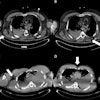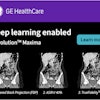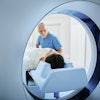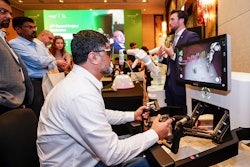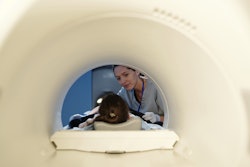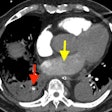Implementation of AI and clinical decision support tools hold the potential to transform pediatric radiology, according to top expert Dr. Kath Halliday. Technological advances will enable more imaging in children in the years to come, but given the global shortage of pediatric radiologists and their uneven distribution, education and advocacy remain urgent priorities right now, she noted.
It's vital to remember children are different from adults because they are physiologically distinct and vulnerable, she said in a keynote talk at Arab Health's Total Radiology Conference in Dubai, United Arab Emirates, on 30 January. Wide variations exist in their communication skills, cooperation, family dynamics, and congenital conditions. Also, children are disproportionately affected by environmental factors, and health professionals tend to be scarce in areas of greatest need, she stated.
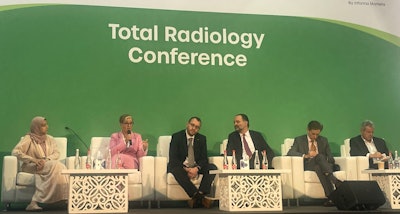 Dr. Kath Halliday and fellow panel members, including former ESR president Prof. Michael Fuchsjaeger from Graz in Austria, discuss the future challenges and opportunities in pediatric radiology.
Dr. Kath Halliday and fellow panel members, including former ESR president Prof. Michael Fuchsjaeger from Graz in Austria, discuss the future challenges and opportunities in pediatric radiology.
The good news is improvements in child mortality and child health have occurred worldwide, but there remains scope for improvement, according to Halliday, who is president of the U.K. Royal College of Radiologists.
Neonatal conditions are the commonest cause of death, and pneumonia, diarrhea, malaria, and congenital conditions are often responsible, she emphasized. Over the past five years, more than half of countries have produced no data on mortality for the under-5s, and in the 37 countries considered to be fragile or affected by conflict, mortality among the under-5s is three times higher than the global average, according to United Nations Children's Fund (UNICEF) data. In the 5- to 15-year-old age group, injuries, conflict, and accidents are common causes of death.
Road injury is the leading cause of death for children and young people, and more than a billion children are exposed to violence every year, the World Health Organization noted in a recent report. Children are often exposed to commercial marketing that promotes addictive substances and unhealthy commodities, it added.
The workforce crisis in healthcare has become much worse after the COVID-19 pandemic due to burnout and strikes, explained Halliday, who became a consultant pediatric radiologist at Nottingham University Hospital in 1998 and was chair of the British Society of Paediatric Radiology from 2010 to 2016. Healthcare workers can choose where to work for a better lifestyle, and a workforce growth rate of 8% to 12% is necessary to maintain the status quo, she said.
In Mexico, Cambodia, Tanzania, Nigeria, and Zimbabwe, there are less than five radiologists per million of population. Kenya only has around 200 radiologists to serve its 200 million population, while Rwanda has 12 radiologists for 5.5 million people and Liberia has two radiologists for its 5 million inhabitants. "There are more radiologists in four Boston teaching hospitals than in West Africa," she noted, adding that less than 39% of U.K. hospitals have access to 24/7 pediatric radiology.
Against this background, provision of advocacy services, training of community health workers, remote reporting and education, and optimum use of point-of-care ultrasound (POCUS) in the treatment of pneumonia, tuberculosis, abscess formation, etc, are vital, Halliday pointed out. More implementation of AI in pediatric radiology would be useful too, though it is used commonly in the U.K. for bone age assessment.
Increased availability of CT would also help in diagnosis of cystic fibrosis and for better neonatal screening. In cases of suspected physical abuse, CT has a higher sensitivity than chest x-rays for rib fractures, she said.
MRI in children under 4 has gradually become easier due to the natural sleep scan, which involves bedtime scanning and no sedation, as well as possible use of virtual reality and melatonin.
Pediatric interventional radiology is currently underused, but demand will increase, Halliday predicts. The number of indications for pediatric interventional radiology, particularly in oncology and in neonatal care, but provision of services remains patchy and inadequate. Bleeding, sepsis, thrombolysis, and gastrointestinal and venous access are issues to consider. For further reading, she recommends the 2023 RCR statement on improving services.


